Together with flatware, cookware is a key production segment for Sambonet, as well as the core business that made Paderno what is today: an undisputed leader in the professional kitchens.
Pots and pans, for both retail and Ho.Re.Ca. markets, are the result of experience, know-how and technological innovation that marked the company production over the years.Procedures and raw materials play a fundamental role in these creations: every element influences the process and its result, from the type of steel used to its original thickness.
“Everything begins from a stainless steel or aluminum disc” – explains Gianluca Campanella, part of the company since 2003. “According to the design we want to obtain, the techniques used will differ for number of steps and processes. Some collections come alive and assume their forms thanks to a deep-drawing cycle of the disc. Some others, instead, require a further sophisticated phase, called metal spinning."
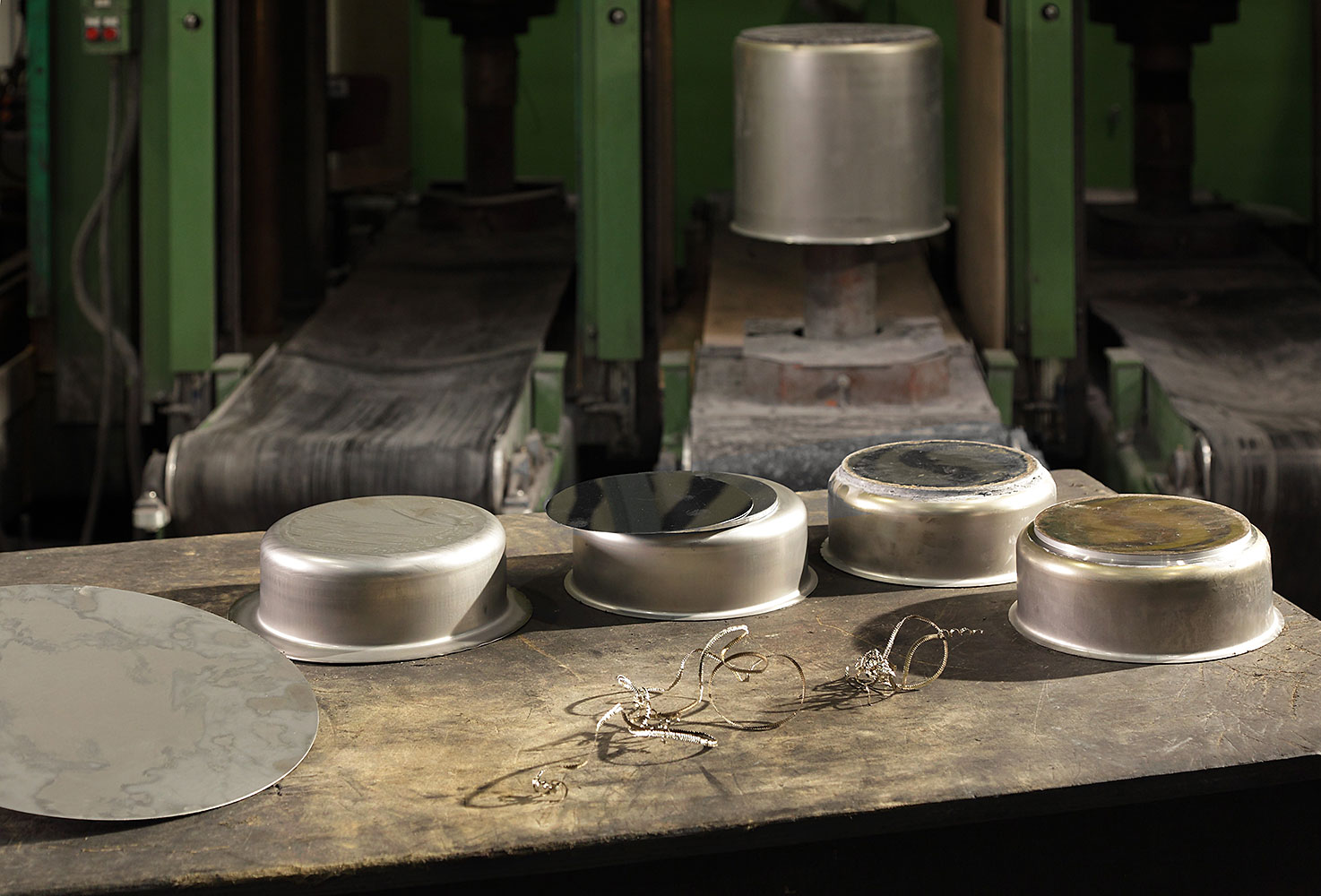
The different phases of the creation of the body of the pot.
The disc is placed on a cylindrical stamp that through a mechanical pressure transform it into the typical cylindrical shape of a pot. This step can be repeated several times, until the piece reaches the depth and the other characteristics required. Afterwards, if we want to obtain a “pouring rim”, the piece is blanked, refined and then drooled; otherwise, alternative steps are required, in order to create the most distinguishing collections of the company. The stainless steel cylinders obtained with the deep-drawing processes are placed in a special machine formed by a rotating stamp and three rolls arranged to form a 120° angle. The stamp and the rolls spin in opposite ways, touching the material and compressing it, “stretching out” the piece and making it assume the desired depth. In both cases, a final wash cycle removes oils and other processing residues.
Once the body of the pot is ready, it must be equipped with a bottom. Sambonet uses mainly two types of bottom: the “sandwich thermo radiant bottom”, composed by a triple steel-aluminum-steel layer, and the “encapsulated bottom”, formed by an aluminum disc covered by a capsule. The method used for both of them is the induction soldering: a special mixture of metallic powders that form a solder paste is manually applied on each layer by the operators, then the pot undergoes a special treatments. With electrical and pressure inductors, the layer are soldered one another and with the body of the pot. In this step, the operative parameters and the machine settings play a fundamental role: if the power or the pressure are too high or too low, the bottom won’t stick correctly to the pot. That’s why quality controls and stress tests are performed for every batch.
Afterwards, the pot undergoes the processes of smoothing and thermal shock with cold water and then is refined with a lathe to remove the excess and the imperfections created during the welding.
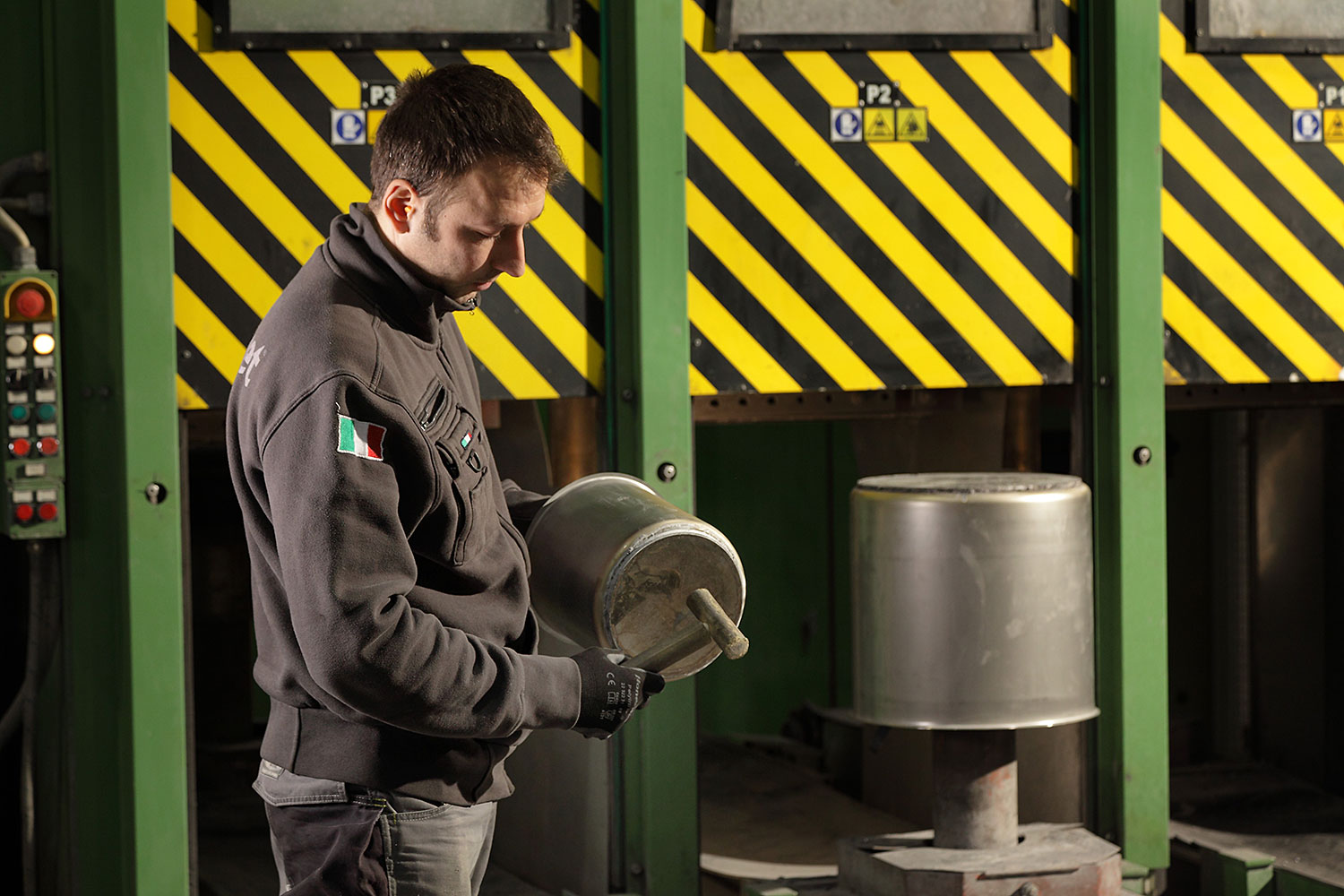
Manual control to test the result of the braze welding
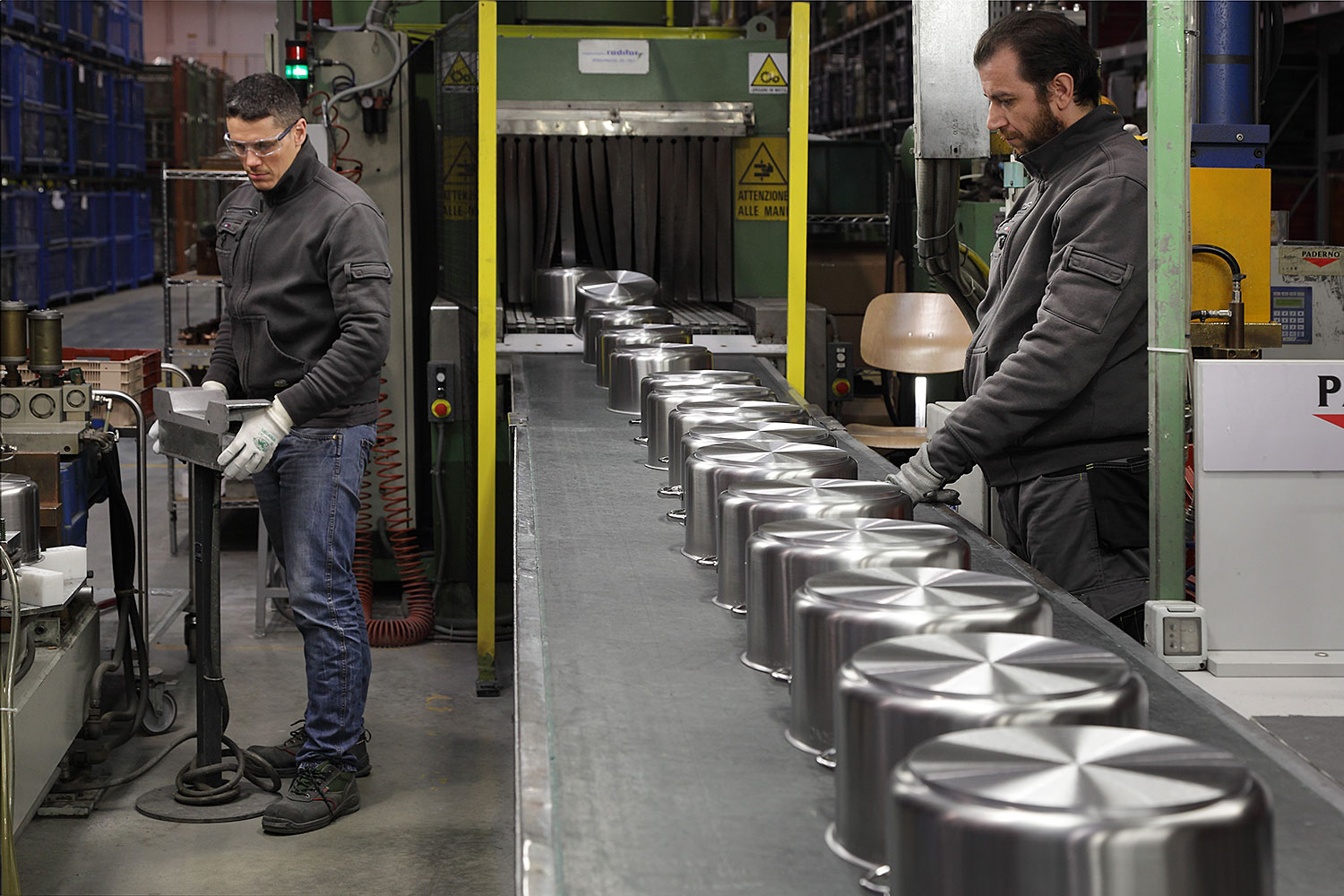
Pots coming out from the wash cycle
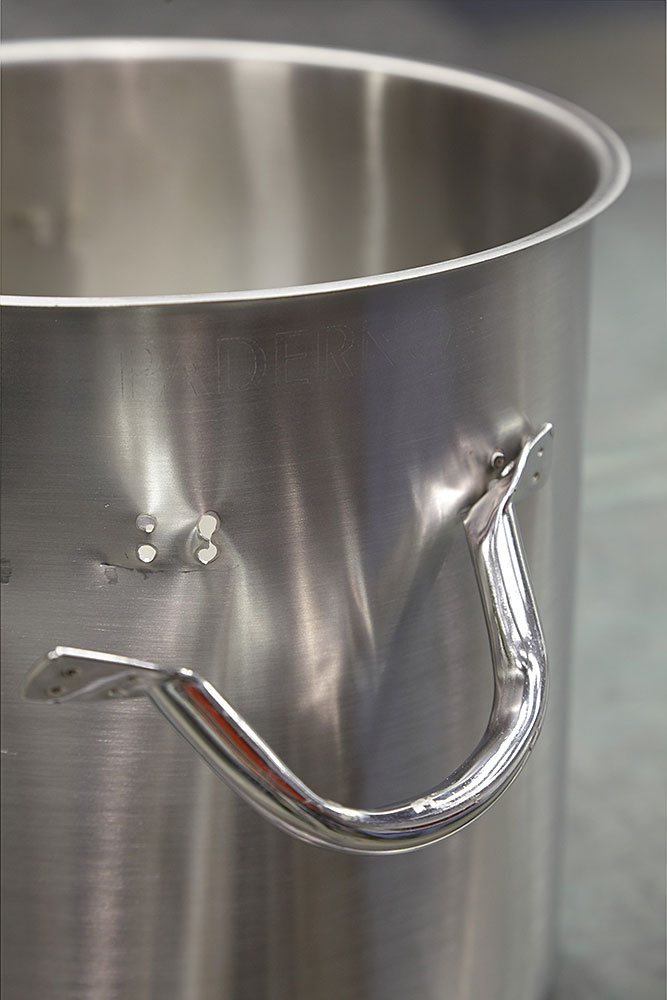 Pot after a stress test: the strength of more than 300 kg impressed on the handle has created an hole in the body of the pot. This means that the welding was incredibly strong: instead of ceding, it broke the main pota.
Pot after a stress test: the strength of more than 300 kg impressed on the handle has created an hole in the body of the pot. This means that the welding was incredibly strong: instead of ceding, it broke the main pota.
“The stability of a professional pot during its usage is a really important factor to consider: that’s why the bottom is slightly concave” – adds Gianluca. The concavity guarantees stability during usage at every temperature. A maximum tolerance of one millimeter is the benchmark for the quality control.
To complete the creation of a pot we can choose among different finishes: polishing and satin finishing. They remove any irregularity, refine and return flawless surfaces. Then, handles are applied. Welding and handles resistance are essential for the pot. Just think about how heavy (and dangerous) the pot can be when full of boiling liquid. Specifical test are made on the handles, so that they can bear till 3 times the weight a full pot can have.
Finally, the marking with Sambonet’s or Paderno’s stamps to track every item and guarantee the quality in every cycle of the production.
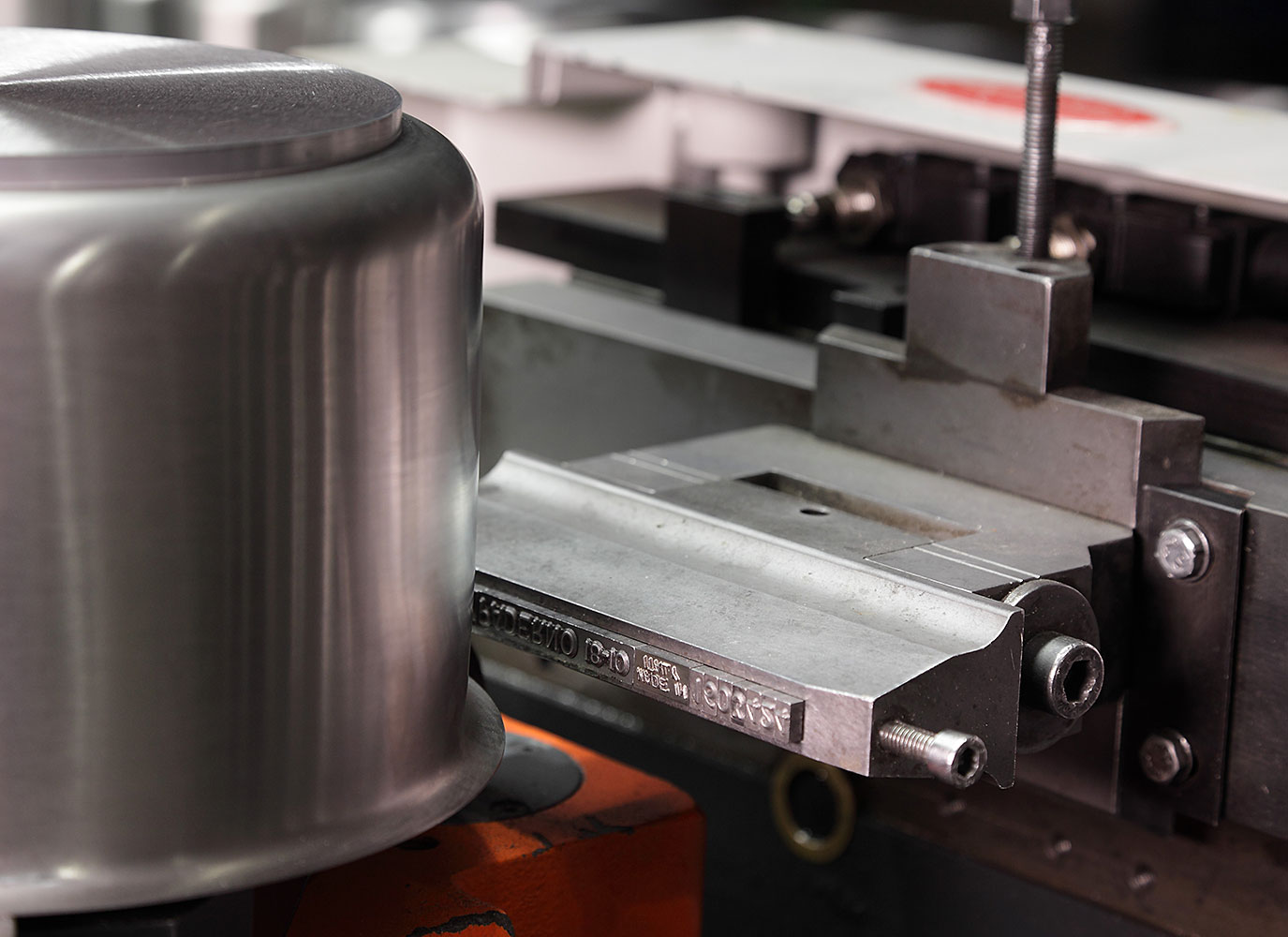
Marking of Paderno logo and single tracking number
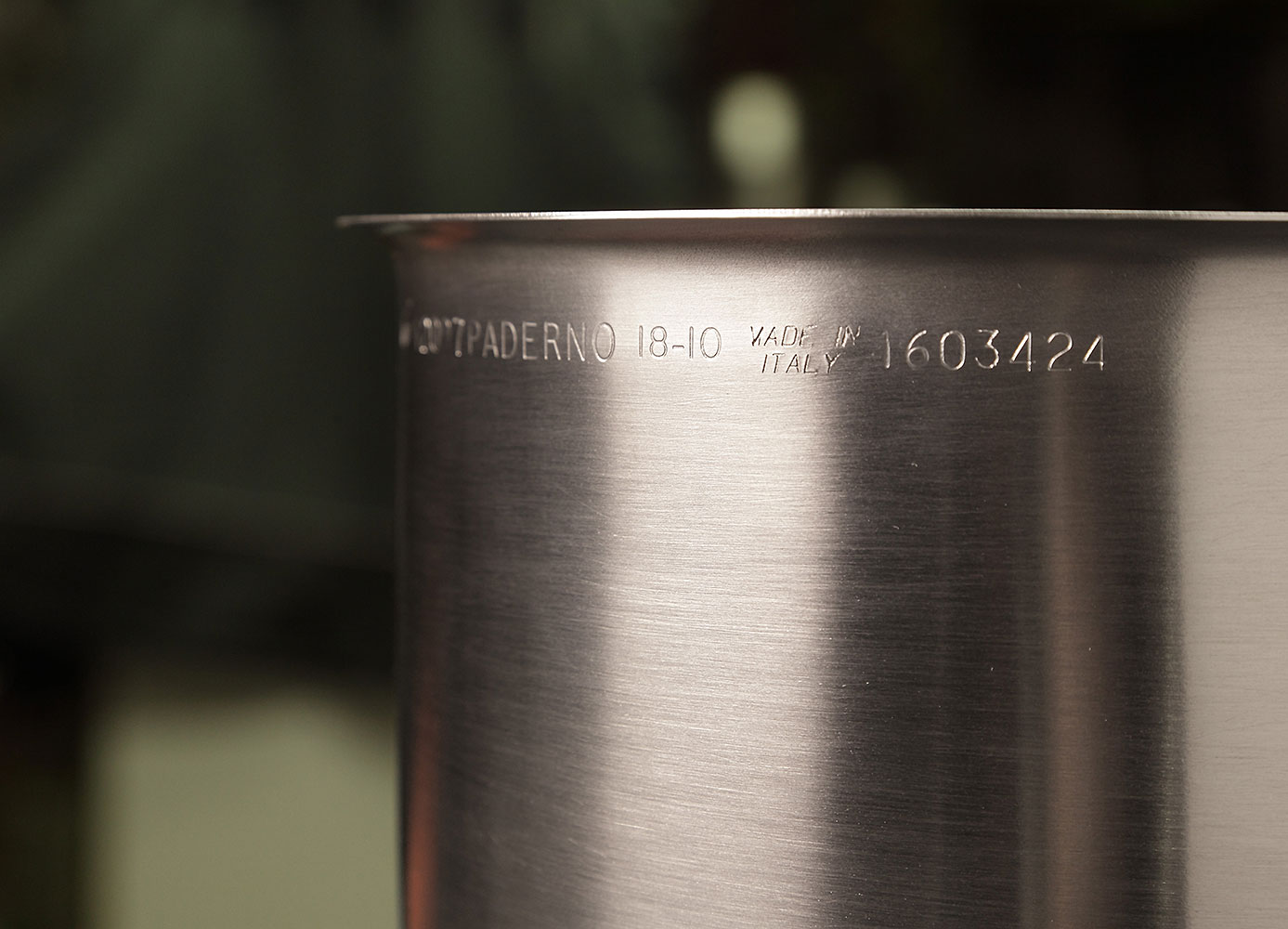
Detail of the tracking number

